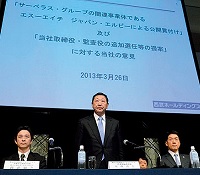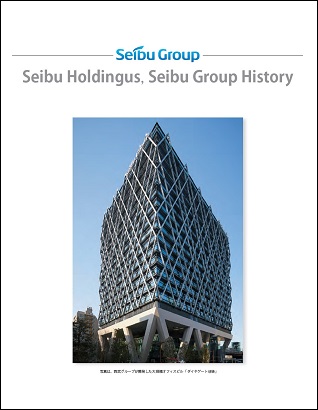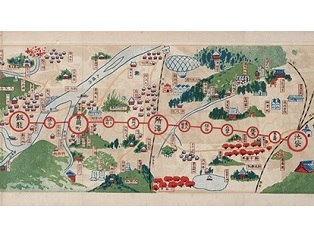
1892-1929
Two tracks forming the origins of Seibu Railway

Seibu Railway has set May 7 as the date to mark anniversaries of its founding. Musashino Railway was also founded on May 7, in 1912, which can be considered the starting point of the history of Seibu Railway. An explanation is needed here, however. Of the lines operated by the present-day Seibu Railway, the oldest is the Kokubunji to Kawagoe (currentlyHon-Kawagoe) line, which opened in 1895 as Kawagoe Railway. Thus the two strands of Seibu Railway’s history are Musashino Railway and Kawagoe Railway, which eventually came together and became the Seibu Railway of today.
- 1906 Nationalization of Nippon Railway, Kobu Railway, and others
- 1914 Start of World War I
- 1918 End of World War I
-
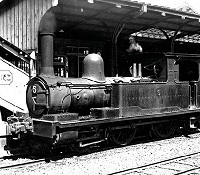
【Seibu Railway】
Kawagoe Railway was founded in 1892. Not having a direct service to Tokyo, the company faced a management crisis in the early 20th century and entered into an absorption-type merger with an electric power company in 1920. In 1922 it became the former Seibu Railway (a different company from today's Seibu Railway). -
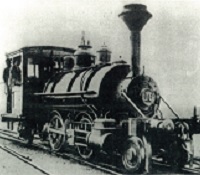
【Izuhakone Railway】
Zuso Railway was established in 1893, and in 1898 the Mishima-machi-Nanjo and Mishima-machi-Mishima sections were opened. In 1907, Zuso Railway was dissolved, and Izu Railway was established. -
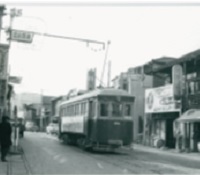
【Izuhakone Railway】
In 1896, Sunzu Electric was established. In 1906, the name was changed to Sunzu Electric Railway, and the Numazu Teishajo-mae-Mishima-Rokutanda section was opened. In 1908, the Mishima-machi-Mishima-Rokutanda section was opened. Later, in 1912, it acquired the Mishima-Ohito section of Izu Railway’s railway business. -
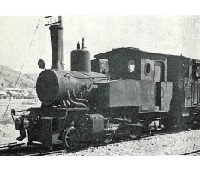
【Ohmi Railway】
Ohmi Railway was established in 1896, and the Hikone-Youkaichi, Youkaichi-Kibukawa, and Takamiya-Taga sections were opened in 1898, 1900, and 1914, respectively. -
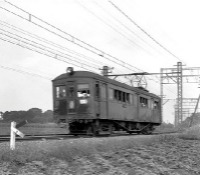
【Seibu Railway】
Musashino Railway was established in 1912. In 1915, the section connecting Ikebukuro and Hannō was opened. It proved profitable, attracting many passengers from both central Tokyo and suburban areas. This is the original Ikebukuro Line of Seibu Railway. -
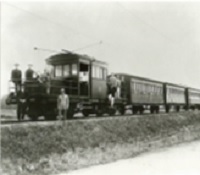
 【Izuhakone Railway】
【Izuhakone Railway】
In 1916, Fuji Hydroelectric merged with Sunzu Electric Railway. The steam engines between Mishima and Ohito and the trains between Mishimarokutanda and Numazuekimae were made part of Fuji Hydroelectric's Railway Department, and later, in December 1916 Sunzu Railway was spun back out. In 1917, Fuji Hydroelectric transferred its business to Sunzu Railway. In August 1924, the Ohito-Shuzenji section was opened, and the section between Mishima (now Shimo-Togari Station on the JR Gotemba Line) and Shuzenji was completed. In 1925, it became a subsidiary of Hakone Tochi.【Izuhakone Railway】
In 1916, Fuji Hydroelectric merged with Sunzu Electric Railway. The steam engines between Mishima and Ohito and the trains between Mishimarokutanda and Numazuekimae were made part of Fuji Hydroelectric's Railway Department, and later... View More -
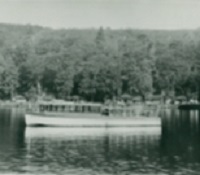
【Izuhakone Railway】
Hakone Yusen was established in 1920. -
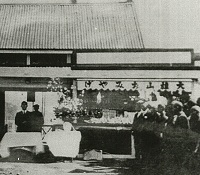
【Izuhakone Railway】
Daiyuzan Railway was established in 1922. The Kari-Odawara-Daiyuzan section was opened in 1925 and then extended to Shin-Odawara in 1927. In June 1935, the section between Odawara and Daiyuzan was completed. -
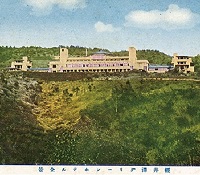
【SEIBU PRINCE HOTELS WORLDWIDE・Seibu Railway】
Hakone Tochi was established in 1920. Three years later, Green Hotel was opened, and in 1925, the Kunitachi academic town was established. Tamako Railway was established by TSUTSUMI Yasujiro in 1928, and the Kokubunji-Hagiyama and Hagiyama-Motokodaira sections were opened in the same year.
1930-1949
An Aggressive Approach, Even in the Midst of Post War Chaos. The Prince Hotel Name Goes Down in History
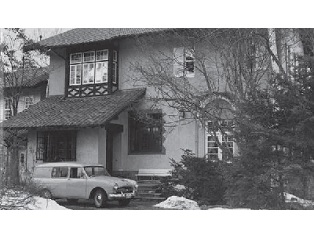
After World War II, even as a path to recovery had yet to be found, TSUTSUMI Yasujiro's business focused on putting railways in place and investing capital in high-turnover ventures. His acquisition of the Sengataki, Karuizawa summer home of the Asaka-no-miya family, members of the imperial family, was an event of historical proportions. Rather than reapportioning and selling the property, he renovated parts of it and opened it as the Prince Hotel. This was the first appearance of the Prince Hotel name.
- 1934 Tanna Tunnel opened on Tokaido Main Line
- 1936 Fuji Hakone designated as a national park
- 1941 Start of the Pacific War
- 1945 End of the Pacific War
- 1949 Japanese National Railways and Japan Tobacco & Salt Public Corporation established. Beer hall operations restored.
-

【Seibu Railway】
In 1930, the former Seibu Railway opened the Higashi-Murayama-Murayamamachosuichimae section. In 1943, TSUTSUMI Yasujiro became president of the former Seibu Railway. -

【Ohmi Railway】
In 1931, Ohmi Railway opened the Hikone-Maibara section, and in 1944, it merged with Youkaichi Railway. -
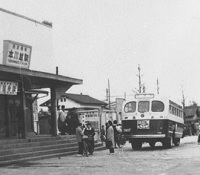
【Seibu Bus】
In 1932, Higashiura Jidosha, the predecessor of today's Seibu Bus, was established, and in 1947, the name was changed to Seibu Jidosha. -
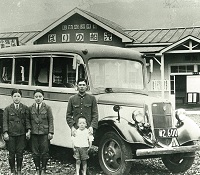
【Izuhakone Railway】
In 1938, Sunzu Railway merged with Hakone Yusen, and in 1941 it acquired and merged with Daiyuzan Railway. -
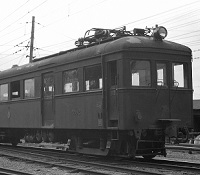
【Seibu Railway】
In 1940, TSUTSUMI Yasujiro became president of Musashino Railway. -

【Seibu Construction】
In 1941, Tokyo Taika Kenzai, the predecessor of today's Seibu Construction, was established, and in 1946, the name was changed to Fukkosha. -
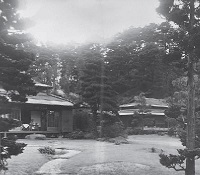
【SEIBU PRINCE HOTELS WORLDWIDE】
Hakone Tochi changed its name to Kokudo Keikaku Kogyo in 1944, and in 1947, Sanyo-so was opened. -

【Seibu Railway】
In 1945, Musashino Railway and the former Seibu Railway merged, and the name was changed to Seibu Agricultural Railroad. The following year, the name was changed to Seibu Railway.
1950-1969
Seibu Railway, separation of the hotel business
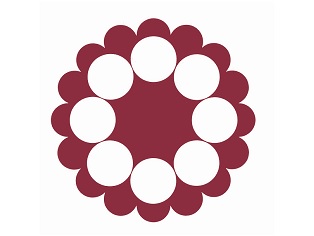
In 1956, Seibu Railway took the hotel business it had owned and operated independent, establishing Prince Hotels, Inc. The Prince hotel brand was built through a shared business arrangement, under which Seibu Railway continued to own the urban hotels and the land under them, while Prince Hotels was responsible for their operation.
This arrangement continued until 2006, when Prince Hotels acquired Kokudo in an M&A, with Prince Hotels as the surviving entity; at the same time, it was made a wholly owned subsidiary of Seibu Holdings.
- 1950 Start of so-called “Hakoneyama War” for market share
- 1955 Opening of terminal building, predecessor of Tokyo International Airport (Haneda Airport)
- 1955 Electric washing machines, electric refrigerators, and television called the “three status symbols”
- 1956 Opening rush of department stores in Ikebukuro, including Seibu, Tobu, and Mitsukoshi
- 1963 1st condominium boom
- 1964 Holding of Tokyo Olympics Launch of Tokaido Shinkansen service Deregulation of overseas travel
- 1965 Start of high economic growth of Japan
- 1966 Japan's total population surpasses 100 million
- 1968 Japanese GNP becomes second in world after the United States
-
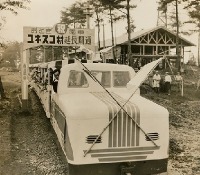
【Seibu Railway】
UNESCO Village was opened in 1951, and the Otogi train (now the Seibu Yamaguchi Line) was extended to UNESCO Village. -
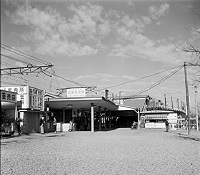
 【Seibu Railway】
【Seibu Railway】
In 1952, the Takadanobaba-Seibu-Shinjuku section was opened, and the Murayama and Kawagoe lines were renamed the Shinjuku Line while the Higashi-Murayama-Kokubunji section was renamed the Kokubunji Line, and the Ikebukuro-Agano section was renamed the Ikebukuro Line.
In 1968, the Tamagawajōsui-Haijima section was opened, and the Kodaira-Haijima section was named the Haijima Line.【Seibu Railway】
In 1952, the Takadanobaba-Seibu-Shinjuku section was opened, and the Murayama and Kawagoe lines were renamed the Shinjuku Line... View More -
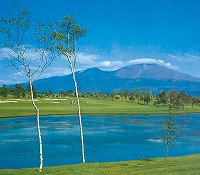
【SEIBU PRINCE HOTELS WORLDWIDE】
The Yunohana Golf Course was opened in 1952, and the Minami-Karuizawa Golf Course was opened in 1956 with 9 holes (now part of the Iriyama Course). -
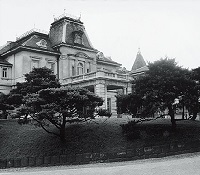
 【SEIBU PRINCE HOTELS WORLDWIDE】
【SEIBU PRINCE HOTELS WORLDWIDE】
Several hotels were opened one right after another, starting with the Takanawa Prince Hotel (now the Grand Prince Hotel Takanawa) in 1953, followed by the Yokohama Prince Kaikan (later the Yokohama Prince Hotel) in 1954, and the Akasaka Prince Hotel (later the Grand Prince Hotel Akasaka) in 1955. The Prince Hotel brand was established with the opening of the Tokyo Prince Hotel in 1964.【SEIBU PRINCE HOTELS WORLDWIDE】
Several hotels were opened one right after another, starting with the Takanawa Prince Hotel (now the Grand... View More -
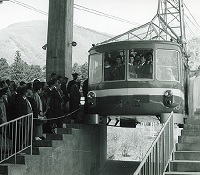
【SEIBU PRINCE HOTELS WORLDWIDE】
The Hakone Komagatake Cable Car was opened in 1957, followed by the Hakone Komagatake Ropeway in 1963. -
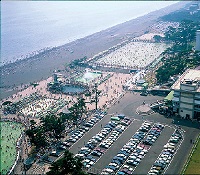
 【SEIBU PRINCE HOTELS WORLDWIDE】
【SEIBU PRINCE HOTELS WORLDWIDE】
Oiso Long Beach was opened in 1957 next to Oiso Hotel (now the Oiso Prince Hotel). During the heyday of Japanese idol groups in the 1980s, it was used as a filming location for television programs, including swimming competitions, owing to its prime location with a view of the Pacific Ocean past the pool area.
It is also known for its use of campaign girls starting in 1979.【SEIBU PRINCE HOTELS WORLDWIDE】
Oiso Long Beach was opened in 1957 next to Oiso Hotel (now the Oiso Prince Hotel). During the heyday of Japanese... View More -
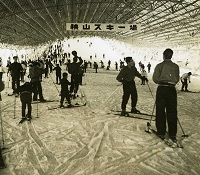
【Seibu Recreation】
The Sayama Ski Resorts (indoor ski hill with artificial snow) was opened in 1959. -

【Seibu Construction】
In 1961, Fukkosha was renamed Seibu Construction. -
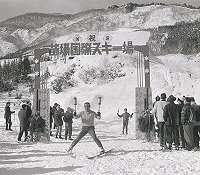
 【SEIBU PRINCE HOTELS WORLDWIDE】
【SEIBU PRINCE HOTELS WORLDWIDE】
The Naeba International Ski Area (now the Naeba Ski Area) was also opened in 1961. Thanks to good access from central Tokyo, the Naeba International Ski Area became popular as a daytrip destination. Another reason for the popularity is that the many slopes that can be enjoyed by everyone from beginners to advanced skiers are built around Naeba Prince Hotel.【SEIBU PRINCE HOTELS WORLDWIDE】
The Naeba International Ski... View More -
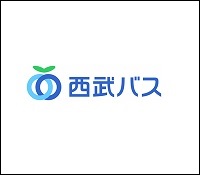
【Seibu Bus】
In 1962, Seibu Jidosha launched conductorless operations between Tokorozawa and Shin-Tokorozawa. In 1969, the company name was changed to Seibu Bus. -
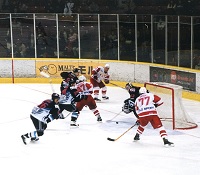
【Seibu Railway】
The Seibu Railway ice hockey team was established in 1966.
In the same year, the Japan Ice Hockey League was established, and owing to the success of Seibu Railway Team, which is based in Tokyo, ice hockey came to be recognized nationwide. -
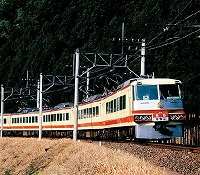
【Seibu Railway】
In 1969, the first-generation Red Arrow, Seibu Railway’s first limited express, was put into service with the opening of the Seibu-Chichibu Line.
1970-1989
Expansion of Real Estate Sales
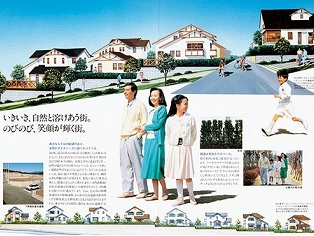
Seibu Real Estate was established in 1970 and started to sell the properties in Kamakura Zushi Highland. The ancient capital of Kamakura and Zushi, known as a convalescent resort area, are two well-known cities in Kanagawa Prefecture. The vast residential subdivision of approximately 940,000 m2 straddles both of these cities. With convenient access to Tokyo, just about an hour away, it quickly gained attention for its location, which put ancient temples and historic spots within walking distance. When sales began, and except for a very short period when it collaborated with a home builder as a means of speeding the town’s maturation, Seibu Real Estate was responsible for almost all sales of ready-built homes in the project.
The Tokorozawa Matsugaoka subdivision in Tokorozawa located on a Seibu Railway line and the Seibu Hanno-Hidaka subdivision, straddling the cities of Hanno and Hidaka in Saitama, were also developed by the Seibu Group.
- 1970 Holding of EXPO ’70. Tokyo consumer prices become highest in world.
- 1973 Number of overseas travelers surpasses 2 million in overseas travel boom
- 1978 Opening of new Tokyo International Airport (now Narita International Airport)
- 1978 Opening of 60-floor super high-rise building Sunshine 60
- 1982 Launch of Tohoku Shinkansen service Launch of Joetsu Shinkansen service
- 1987 National railway broken up and privatized to become JR companies
-
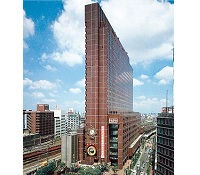
【SEIBU REAL ESTATE】
The former Seibu Real Estate was established in 1970, and in 1976, the name was changed to Seibu Shoji.
Prince Promenade Pepe was opened in 1977. -
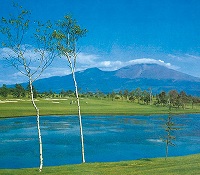
【SEIBU PRINCE HOTELS WORLDWIDE】
Karuizawa 72 golf was opened in 1971 Today, it has expanded to six courses with 108 holes. The scale and abundant nature are something that can only be found in Karuizawa. -
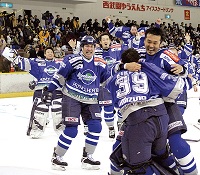
 【SEIBU PRINCE HOTELS WORLDWIDE】
【SEIBU PRINCE HOTELS WORLDWIDE】
The Kokudo Keikaku Ice Hockey Club was established in 1972 and used the Karuizawa Skate Center as its home arena. In its third season, it won the Japan League and the All Japan Championship for the first time, laying its foundation as a winning team, and in 1992, along with the company name change, it was renamed the Kokudo Ice Hockey Club.【SEIBU PRINCE HOTELS WORLDWIDE】
The Kokudo Keikaku Ice Hockey Club was established in 1972 and used the Karuizawa Skate Center as its home arena. In its third season, it won the Japan League and the All Japan... View More -
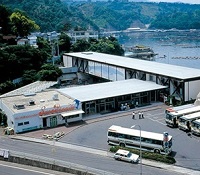
【SEIBU PRINCE HOTELS WORLDWIDE、Izuhakone Railway】
Shimoda Prince Hotel was opened in 1973, and in 1977, Izu Mito Sea Paradise was reopened after remodeling. -
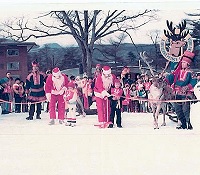
【SEIBU PRINCE HOTELS WORLDWIDE】
The Karuizawa Prince Hotel Ski Area was also opened in 1973. -
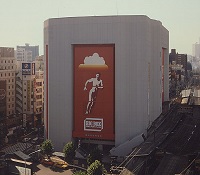
【Seibu Recreation】
In 1974, the Seibu Group opened the BIG BOX Takadanobaba Seibu Sports Plaza, in Tokyo's Shinjuku Ward. With convenient, direct access to Takadanobaba Station, it played a role in creating the weekday, after-hours fitness lifestyle. -
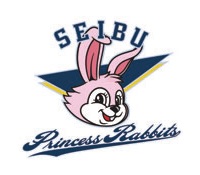
【SEIBU PRINCE HOTELS WORLDWIDE】
The Kokudo Keikaku Women's Ice Hockey Club was established in 1974. It was renamed the Kokudo Ladies Ice Hockey Club in 1992, and in 2006, it became the SEIBU Princess Rabbits to match the men's club name. It is a prestigious team in Japan, having won the Japanese Women's Ice Hockey League Championship, which was established in 2012, eight years in a row. -
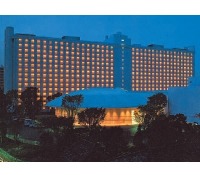
【SEIBU PRINCE HOTELS WORLDWIDE】
In 1977, the Shinjuku Prince Hotel was opened in Kabukicho, one of Tokyo's leading entertainment districts, followed by the Shinagawa Prince Hotel in 1978, the Sunshine City Prince Hotel in 1980, the New Takanawa Prince Hotel (now the Grand Prince Hotel New Takanawa) in 1982, and the Shiga Kogen Prince Hotel in 1983. In 1985, Prince Hotel became a wholly owned subsidiary of Kokudo Keikaku. -
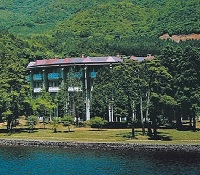
【SEIBU PRINCE HOTELS WORLDWIDE】
The Prince Hakone Ashinoko opened as the Hakone Prince Hotel in 1978. Architect Togo Murano, a recipient of the Order of Culture, worked on the design. Development in Hakone has continued over many years, since the time of the company's founder, TSUTSUMI Yasujiro, and the hotel offers an especially serene atmosphere. -
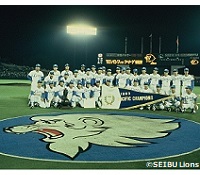
 【Seibu Lions】
【Seibu Lions】
In 1978, the Seibu Lions team, based inTokorozawa, Saitama Prefecture, was born. At the end of that year, the new home stadium-which was already under construction-was named the Seibu Lions Stadium, and the team’s logo and colors chosen. The decision to use Leo, a lion character appearing in Kimba the White Lion-an animated series based on a manga by the famed comic artist TEZUKA Osamu-was instrumental in telling not only baseball fans, but the public at large, that a new and different baseball club had emerged.【Seibu Lions】
In 1978, the Seibu Lions team, based inTokorozawa, Saitama Prefecture, was born. At the end of that year, the new home stadium-which was already under construction-was named the Seibu Lions... View More -
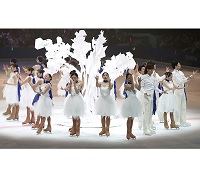
 【SEIBU PRINCE HOTELS WORLDWIDE】
【SEIBU PRINCE HOTELS WORLDWIDE】
VIVA! ICE WORLD, Japan's first ice show was started by Prince Hotel in 1978 at the Shinagawa Prince Hotel Skate Center. The name was later changed to Prince Ice World. The most distinctive feature of Prince Ice World is the “group dance” that is performed by world-class amateur and professional figure skaters in unison. It appeals to fans of all ages and is a stage that next-generation figure skaters dream of taking.【SEIBU PRINCE HOTELS WORLDWIDE】
VIVA! ICE WORLD, Japan's first ice show was started by Prince Hotel in 1978 at the Shinagawa Prince Hotel Skate Center. The name was later changed to Prince Ice World... View More -

【SEIBU PRINCE HOTELS WORLDWIDE】
The Prince Hotel Baseball Club was established in 1979. In 1989, it won its first Intercity Baseball Tournament, and it has produced many professional baseball players.
1990-2003
Start of Mutual Through Service with the Subway's Yurakucho Line
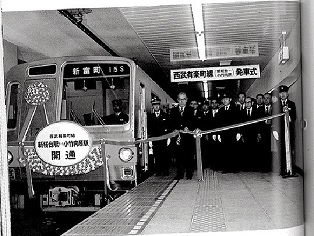
In 1983, the Seibu-Yūrakuchō Line was born, created on the assumption that through service between Seibu Railway and the subway's Yurakucho Line would commence via Kotake-mukaihara Station.
Subsequently, this mutual through service network with the subways would expand even further. In 1983, the section between Shin-Sakuradai and Kotake-mukaihara opened, followed by the section between Shin-Sakuradai and Nerima in 1994. In 1998, mutual through service also began between Hannō Station on the Ikebukuro Line and Shin-kiba Station on the Eidan (now the Tokyo Metro) Yurakucho Line. With a direct connection between Saitama Prefectures and the east side of Tokyo's 23 central wards, a trip of approximately 60 km could now be completed in about an hour and a half.
- 1995 Great Hanshin-Awaji Earthquake
- 1995 Personal handyphone system (PHS) and Windows 95 become hit products
- 1996 Number of mobile phones and PHS phone subscriptions surpasses 20 million
- 1997 Launch of Nagano Shinkansen service
- 1998 Holding of Nagano Winter Olympics
- 2001 Establishment of Saitama City
- 2002 South Korea and Japan jointly host FIFA World Cup
-
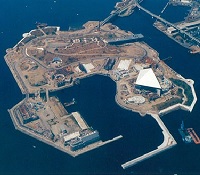
【Yokohama Hakkeijima】
Yokohama Hakkeijima Inc. was established in 1990, and in 1993, it opened Yokohama Hakkeijima Sea Paradise. -
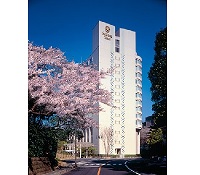
 【SEIBU PRINCE HOTELS WORLDWIDE】
【SEIBU PRINCE HOTELS WORLDWIDE】
The Hawaii Prince Hotel Waikiki (now the Prince Waikiki) was opened in Oahu, Hawaii in 1990.
The Shin-Yokohama Prince Hotel was opened in 1992.
The Hapuna Beach Prince Hotel (now the Westin Hapuna Beach Resort) was opened on Hawaii Island in 1994, and the Takanawa Prince Hotel Sakura Tower (now the Prince Sakura Tower Tokyo) was opened in 1998.【SEIBU PRINCE HOTELS WORLDWIDE】
The Hawaii Prince Hotel Waikiki (now the Prince Waikiki) was opened in Oahu,... View More -
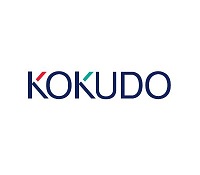
【SEIBU PRINCE HOTELS WORLDWIDE】
In 1992, Kokudo Keikaku was renamed Kokudo. -
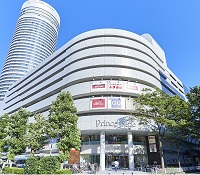
【SEIBU REAL ESTATE】
Also in 1992, the Shin Yokohama Prince Hotel Shopping Plaza Pepe was opened, and in 1995, the Shinagawa Prince Residence was opened. -
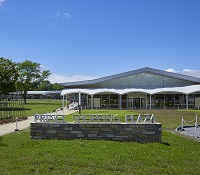
 【SEIBU REAL ESTATE】
【SEIBU REAL ESTATE】
Karuizawa Prince Shopping Plaza is the heart of Prince Grand Resort Karuizawa, which has various resort facilities, including a hotel, golf course, ski area, and shopping mall. The West section was opened in 1995, and the East section was opened in 1997. An outlet format was introduced at the mall ahead of its competitors when opening the East section, leading the outlet boom in Japan.【SEIBU REAL ESTATE】
Karuizawa Prince Shopping Plaza is the heart of Prince Grand Resort Karuizawa, which has various resort facilities, including a hotel, golf course, ski area, and... View More -

【SEIBU REAL ESTATE】
In 2000, Seibu Shoji launched the parking business, Seibu Smile Park, which contributes to develop more comfortable residential towns, primarily along Seibu Railway lines.
2004-2020
Trust shaken Stock market relisting after the difficult path of rebuilding
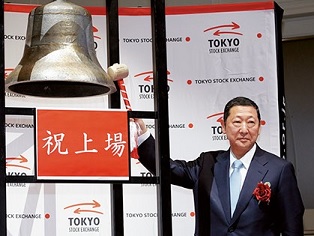
In 2004, payoffs to a corporate racketeer and false statements in the securities report at Seibu Railway came to light. This resulted in delisting on the Tokyo Stock Exchange, leading to the company's removal from the First Section.
Seibu Holdings Inc., a holding company, was established to rebuild the trust that was lost. The Group came together to maximize its corporate value, including restructuring based on the principle of differentiating and concentrating core businesses, improving business profitability, establishing and ensuring compliance, and establishing internal controls. These efforts paid off, and on April 23, 2014, Seibu Holdings was re-listed on the First Section of the Tokyo Stock Exchange.
- 2004 Teito Rapid Transit Authority is privatized to become Tokyo Metro
- 2005 Holding of EXPO 2005, AICHI JAPAN
- 2005 Launch of YouTube and posting of first video
- 2008 Launch of Twitter in Japan
- 2011 Kyushu Shinkansen Line is completely opened. Great East Japan Earthquake
- 2012 Opening of Tokyo Skytree
- 2015 Launch of Hokuriku Shinkansen service
- 2016 Launch of Hokkaido Shinkansen service
-

【Seibu Railway】
In 2004, payoffs to a corporate racketeer and false statements in the securities report at Seibu Railway came to light. This resulted in delisting on the Tokyo Stock Exchange, leading to the company’s removal from the First Section on December 17. -
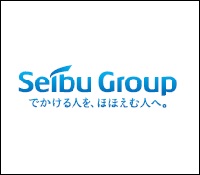
【SEIBU HOLDINGS】
The restructuring procedures were completed in 2006, and Seibu Holdings was established. Seibu Railway and Prince Hotels became direct subsidiaries as a result.
A new Group slogan logo and Group vision were established at the same time. -
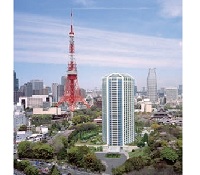
【SEIBU PRINCE HOTELS WORLDWIDE】
Epson Shinagawa Aqua Stadium (now Maxell Aqua Park Shinagawa) and the Tokyo Prince Hotel Park Tower (now the Prince Park Tower Tokyo) were opened in 2005. -

【SEIBU PRINCE HOTELS WORLDWIDE】
In 2007, Prince Hotels was rebranded into three categories under the new branding strategy, and a new logo was rolled out. -
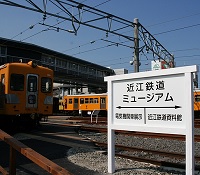
【Ohmi Railway】
The Ohmi Railway Museum was also opened in 2007. -

【Seibu Lions】
In 2008, the Seibu Lions professional baseball team added Saitama to its team name. This renaming provided the opportunity to clarify the team's presence in the prefecture, and to plant even firmer roots for its activities in the community. -
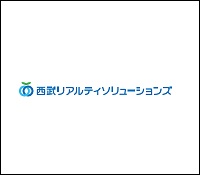
【SEIBU REAL ESTATE】
In 2009, Seibu Shoji and Seibu Real Estate merged, creating Seibu Properties. -
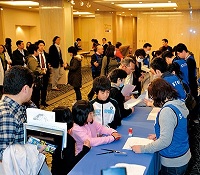
【SEIBU PRINCE HOTELS WORLDWIDE】
On March 31, 2011, the Grand Prince Hotel Akasaka closed. Afterward, for about three months from April 9 to June 30, it accepted as many as 788 evacuees from Fukushima who were displaced by the Great East Japan Earthquake on March 11. -

【SEIBU REAL ESTATE】
In 2013, Seibu Properties began its roll-out of “emilive” rental housing along Seibu Railway lines. -
【SEIBU HOLDINGS】
Also in 2013, Seibu issued a statement of opposition in response to the announcement of a take-over bid for Seibu shares by Cerberus Group. ... View More -
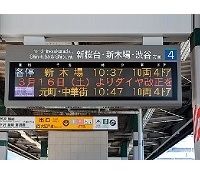
【Seibu Railway】
The same year, Seibu Railway launched mutual through-service operations with the Tokyo Metro Fukutoshin Line, the Tōkyū Tōyoko Line, and the Yokohama Minatomirai Line. -
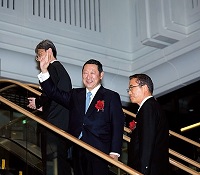
【SEIBU HOLDINGS】
In 2014, Seibu Holdings was re-listed on the First Section of the Tokyo Stock Exchange. -
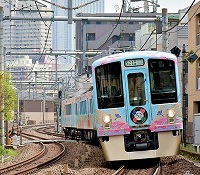
【Seibu Railway】
In 2016, Seibu Traveling Restaurant Train “52 Seats of Happiness” began operation. -
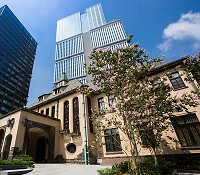
【SEIBU REAL ESTATE】
Also in 2016, Tokyo Garden Terrace Kioicho mixed-use development opened. -
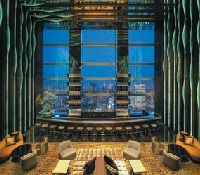
【SEIBU PRINCE HOTELS WORLDWIDE】
Prince Hotels opened The Prince Gallery Tokyo Kioicho in 2016, and the following year, Nagoya's first Prince Hotel “Nagoya Prince Hotel Sky Tower” was opened. -
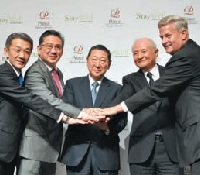
 【SEIBU PRINCE HOTELS WORLDWIDE】
【SEIBU PRINCE HOTELS WORLDWIDE】
In 2017, to expand the overseas hotel business, the Company acquired the StayWell Hospitality Group, which operates mainly in Australia, and consolidated it to establish StayWell Hospitality Pty Ltd. This represented a first steppingstone toward further global expansion.【SEIBU PRINCE HOTELS WORLDWIDE】
In 2017, to expand the overseas hotel business, the Company acquired the ... View More -
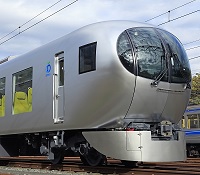
【Seibu Railway】
In 2018, Seibu Railway launched operation of new model limited express train “Laview.” -
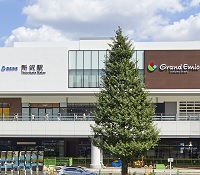
【SEIBU REAL ESTATE】
Seibu Properties opened Phase I of Grand Emio Tokorozawa in 2018 and Phase II in 2020. -
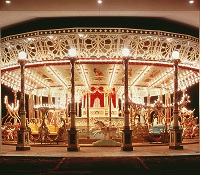
【Toshimaen】
Toshimaen ceased operation after 94 years in 2020.


 Promoting Diversity
Promoting Diversity SEIBU
SEIBU 